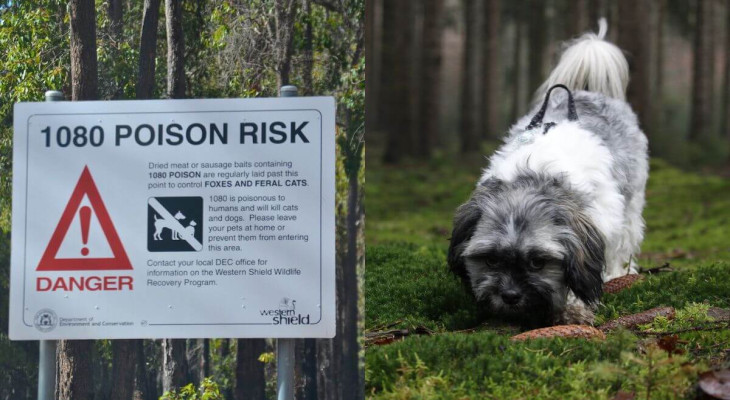Canines Life Cycle
 Aug 30, 2023
Aug 30, 2023
Study Reveals the Suffering of People Whose Dogs Died After Eating 1080 Poison Baits
 Aug 30, 2023
Aug 30, 2023

In a recent study, researchers spoke with seven pet parents about the 1080 poisoning that killed their dog in Australia. They found recurring themes and examined how these factors affected public opinion on lethal control measures. This one is the first qualitative research to give voice to those whose pets have accidentally suffered harm from 1080.
In Australia, poison baits containing sodium fluoroacetate, also called 1080, are frequently used for killing undesirable animals. But most of the time, it goes unnoticed. Although there may be warnings regarding bait placement, pet owners rarely observe the results.
Australia's governments, commercial companies, and land owners have employed 1080 poison baits since the 1950s to kill "pest" species, including foxes, pigs, rabbits, cats, wild canines, and dingoes.
The "metabolic poison" damages the mitochondria, the cell's primary energy source. It might take between 30 minutes and 20 hours from the administration time to the onset of hazardous symptoms. Vomiting, anxiousness, and trembling are some of the early signs. But that's only the start of what might be a protracted, violent, and terrible death. However, the tolerance of native Australian animals to the toxin varies.
The study attempted to comprehend how humans and their connections with other animals are affected when a companion dog dies from 1080 poisoning.
A strong sense of responsibility
While some individuals were unaware of 1080, others were well aware of it and took safety measures, such as avoiding neighborhoods with chances of baiting.
Many participants were surprised by how rapidly their dogs consumed bait after momentarily sniffing the ground or vanishing from view. For hours, up to the start of symptoms or death, others were unaware of what had transpired.
The horror: 'Just running away from pain'
One of the most horrifying happenings in people's life was the loss of their "loved one" due to 1080 baiting. Uncontrollable vomiting, defecating, peeing, crazed running, barking, "screaming," convulsions, disorientation, terror, unconsciousness, and ultimately death were signs of 1080 poisoning.
The dogs were afraid, and their owners felt totally helpless. One participant described their dog as just fleeing from pain:
"He was just running away from pain […] He was running that fast and he obviously had no control over what his body was doing, he just hit the fence at full speed, it dropped him to the ground and he's on the ground snarling and biting and whatnot, at himself, at me, anyone who tried to get near."
The role of authorities
A perceived lack of responsibility from authorities exacerbated the pain of some individuals. They felt that officials minimized and ignored their experience of losing a dog to 1080 poisoning.
Participants believed that 1080 baiting was a conscious decision that caused their dog's suffering and eventual demise. They were incensed that anyone would purposefully opt for such a coercive management style.
In an interview, one pet dog owner said, "What an inhumane thing to do to any living creature. I am just angry that this is happening in Australia, I really am. We are such a progressive country. It's banned in so many parts of the world. And Australia, of all places, is still using it. It's just not Australian to see a wild animal, never mind a dog that you love, die like that."
The public has called for the prohibition of 1080. In fact, a more humane strategy is required, one that respects the objectives and autonomy of both wild and domestic animals. Australia needs to reevaluate its usage of 1080.




